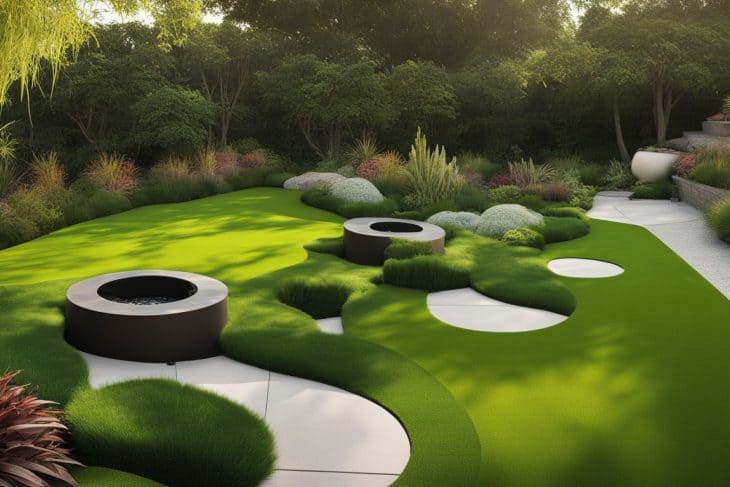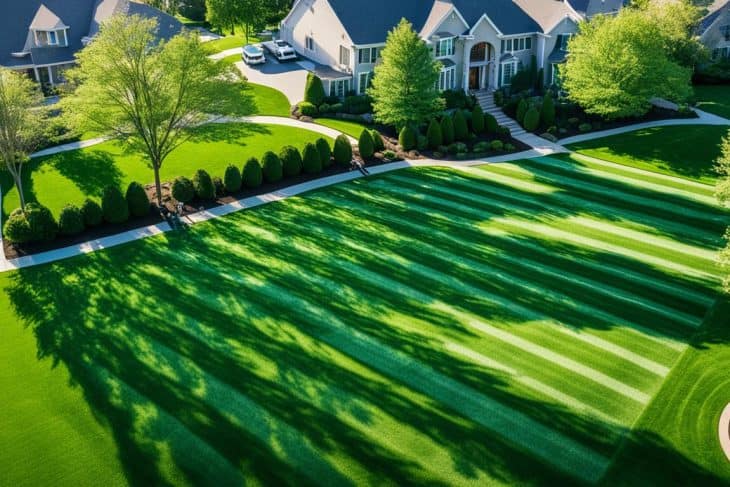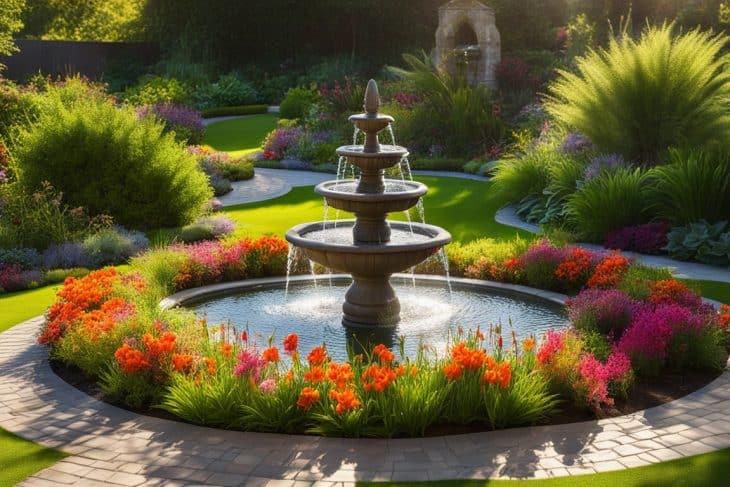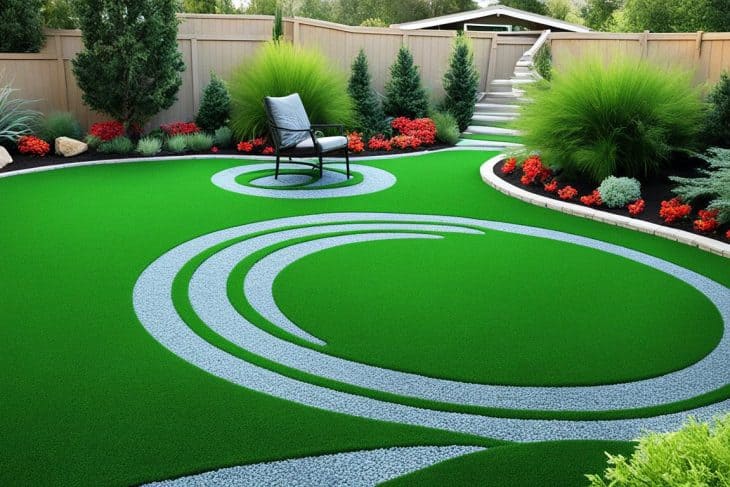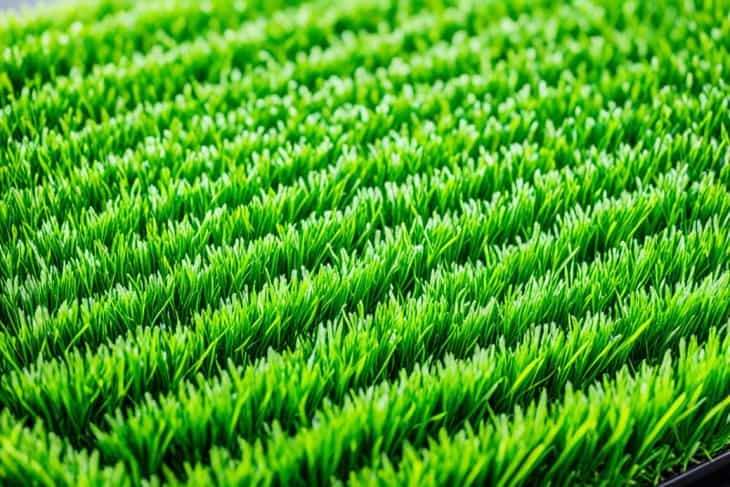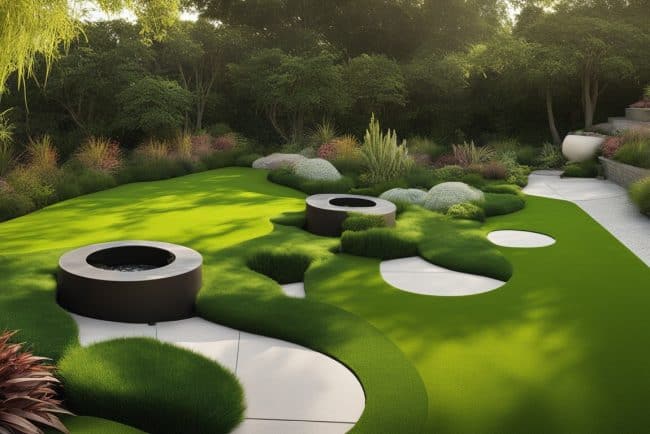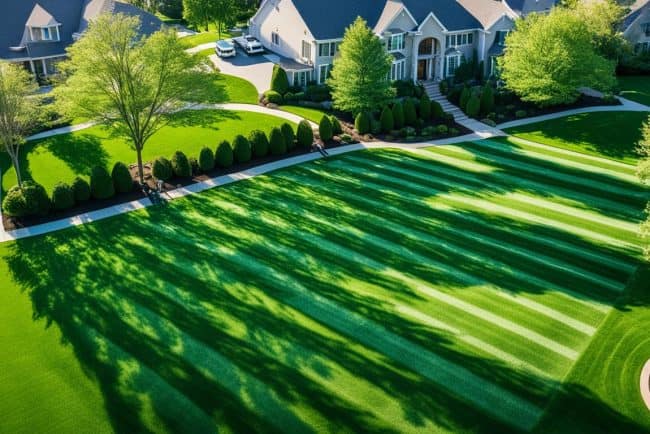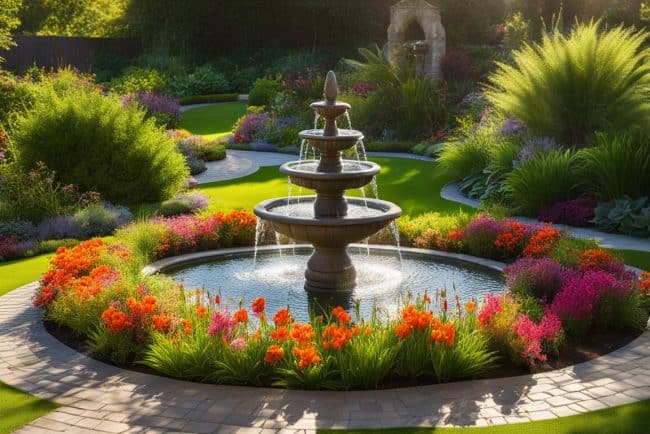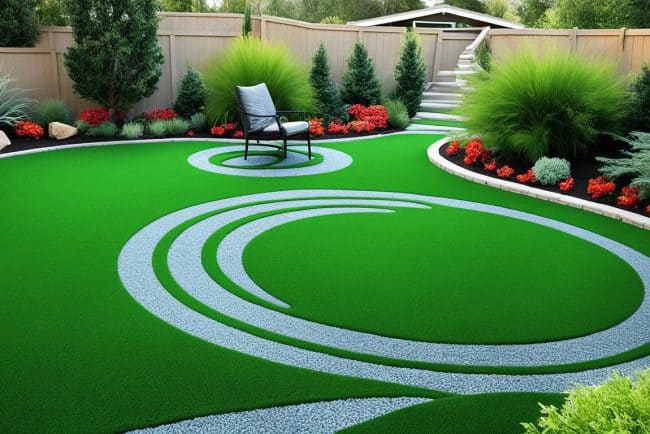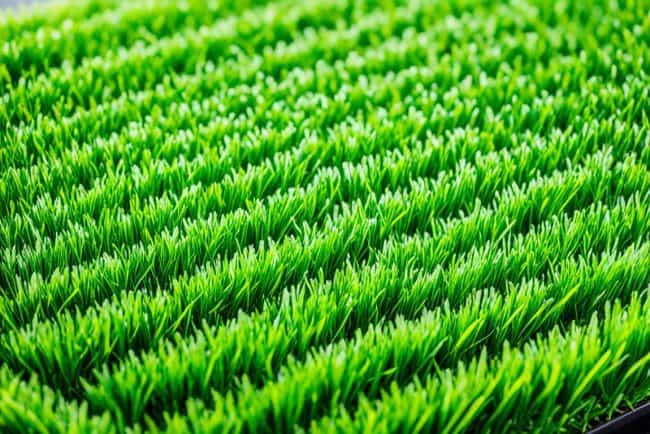
I’ve started looking into eco-friendly lawn options. It’s clear now, more than ever, we need eco-friendly alternatives. Regular lawn care hurts the environment a lot. It uses too much water and causes pollution. For instance, did you know running a gas lawn mower for an hour is as bad as 11 cars on the road? This fact alone shows why we need to change our lawn care ways.
I’ve discovered great options like groundcovers and native plants. These choices can make lawns green with far less work. Groundcovers, such as thyme and Corsican mint, need little water or chemicals. Plus, adding native plants is good too. They use less water and make our gardens look nice. This all leads to a healthier planet.
This article talks about different eco-friendly lawn choices. Options like wildflower meadows and grasses that don’t need much mowing are on the list. These choices cut down on gas use and emissions. Plus, they help our local plants and animals thrive.
What Is Sustainable Grass?
Sustainable grass is about caring for our planet while keeping our lawns beautiful. It’s crucial as we look for ways to lessen our environmental impact. This approach focuses on both looks and eco-friendliness.
Defining Eco-Friendly Grass Alternatives
Eco-friendly grass alternatives need less water and help the environment. They include:
- Low-growing plants
- Groundcovers
- Native species that require minimal water
These options have deep roots, pulling water from the ground. This reduces the need for watering. Choosing them means less pesticides and fertilizers, which is great for the planet.
Benefits of Choosing Sustainable Grass
Choosing sustainable grass helps our environment in many ways. For example, it can cut down on air conditioning needs by 25%. A single lawn can breathe out a day’s oxygen for one adult. Grass tagged with Green Earth needs less mowing and water.
Going green with our lawns boosts biodiversity and helps bees and butterflies. It’s a smart choice for the earth, reducing harmful gases. Plus, it makes our communities nicer places to be.
Best Eco-Friendly Alternatives to Traditional Grass
Switching to eco-friendly landscaping can make a big difference for the planet. Groundcover plants are a great option for those wanting less maintenance and a beautiful yard. They help the local ecosystem by supporting biodiversity.
Groundcovers: A Low-Maintenance Solution
Groundcovers are a top choice instead of traditional grass, which takes up 50 million acres in the U.S. They need less mowing and water, perfect for eco-friendly homes. Choices like creeping thyme, clover, and Scotch moss save water and cut down on the carbon footprint.
These plants don’t need gas mowers that make the air dirty. So, they help in keeping the air clean.
Native Plants to Enhance Local Biodiversity
Using local plants in your yard has many benefits. They grow well in their natural places, needing less water and fitting perfectly with the soil. This can make a big difference for biodiversity, improving soil and offering homes to wildlife.
By picking native plants, you make an ecosystem. This attracts bees and butterflies, making everything around healthier.

Exploring Sustainable Grass Options for Your Lawn
When I think about sustainable lawn choices, I picture different ways to make my outdoor space both lovely and green. Using eco-friendly methods in lawn care cuts down on my carbon footprint. It also boosts the health of my lawn.
Micro Clover is a great choice. This plant helps enrich the soil by adding nitrogen. Even in poor soil, it does well. When mixed with low-maintenance turf grasses, it creates a strong, beautiful lawn that doesn’t need much looking after.
Moss is also a top pick, particularly for shady spots. It’s green all year, doesn’t need cutting, and hardly requires any upkeep. In places that stay wet, moss is perfect for keeping the lawn looking good.
Ground covers like Creeping Thyme and Sweet Woodruff are great for drawing in bees and butterflies. Sweet Woodruff grows fast and fights off weeds. Creeping Thyme is tough enough for some walking and doesn’t mind dry spells, helping your lawn stay environmentally friendly.
Adding ornamental grasses to my yard not only looks good but also saves water. These grasses don’t need much water and adapt to many soil types. They are a smart pick for anyone wanting a sustainable lawn.
Choosing these alternatives means I use less water and resources than a regular turfgrass lawn would need. These easy-to-care-for, eco-friendly choices make my lawn look wonderful. They also provide homes for bees and butterflies, helping our planet’s ecosystems thrive.

Sustainable Grass: No-Mow and Low-Mow Choices
I’ve learned a lot about eco-friendly lawn care, focusing on no-mow and low-mow grasses. These options make our yards look great and require less work and have a smaller environmental footprint. As we all aim to garden more sustainably, these grass choices are becoming even more popular.
Popular No-Mow Grass Types
Several no-mow grasses are now favorites for their toughness and ease of care. Some of the top picks include:
- Buffalo Grass: Loves sunlight and needs little water after it gets going.
- Hard Fescue: Its deep roots mean less watering and mowing.
- Zoysia Tenuifolia: This grass doesn’t mind droughts and you only need to mow it twice a year.
- White Dutch Clover: Great for fighting weeds and improves soil by adding nitrogen naturally.
- Kurapia: Does well in hot areas, stays short, and attracts pollinators.

Low-Mow Grass Benefits
Adding low-mow grasses to my yard design has brought many positives. These grasses offer:
- Good looks with much less mowing needed.
- They resist drought, which is perfect for saving water.
- They stay healthy without needing chemicals since they fend off pests and diseases well.
- They’re tough enough for areas where kids and pets play.
Switching to no-mow and low-mow grasses helps our planet and increases biodiversity. Using these grasses means our yards can be both gorgeous and green.
Wildflower Meadows: A Gorgeous Alternative
I found out wildflower meadows can replace traditional lawns beautifully and help the environment. The U.S. has over 24 million acres of grass lawns that are expensive to keep up. Many people are now looking at wildflowers for their yards. They need less water and no harmful chemicals, making them easy to take care of.
Creating a Vibrant Wildflower Environment
Starting a wildflower meadow takes choosing the right plants for your area. I started mine in 2003, and saw flowers in 2005. It’s best to use special mixes of wildflowers. They attract wildlife like butterflies and birds. A machine called a motorized top dresser helps spread compost. This gets your soil ready for planting.
After a couple of years, these meadows mostly take care of themselves. They offer beauty and help the environment for many years. As the meadow grows, it becomes a home for animals. Sometimes, you can replant some areas to keep the meadow full and vibrant. This helps the environment and makes a space everyone can enjoy.



